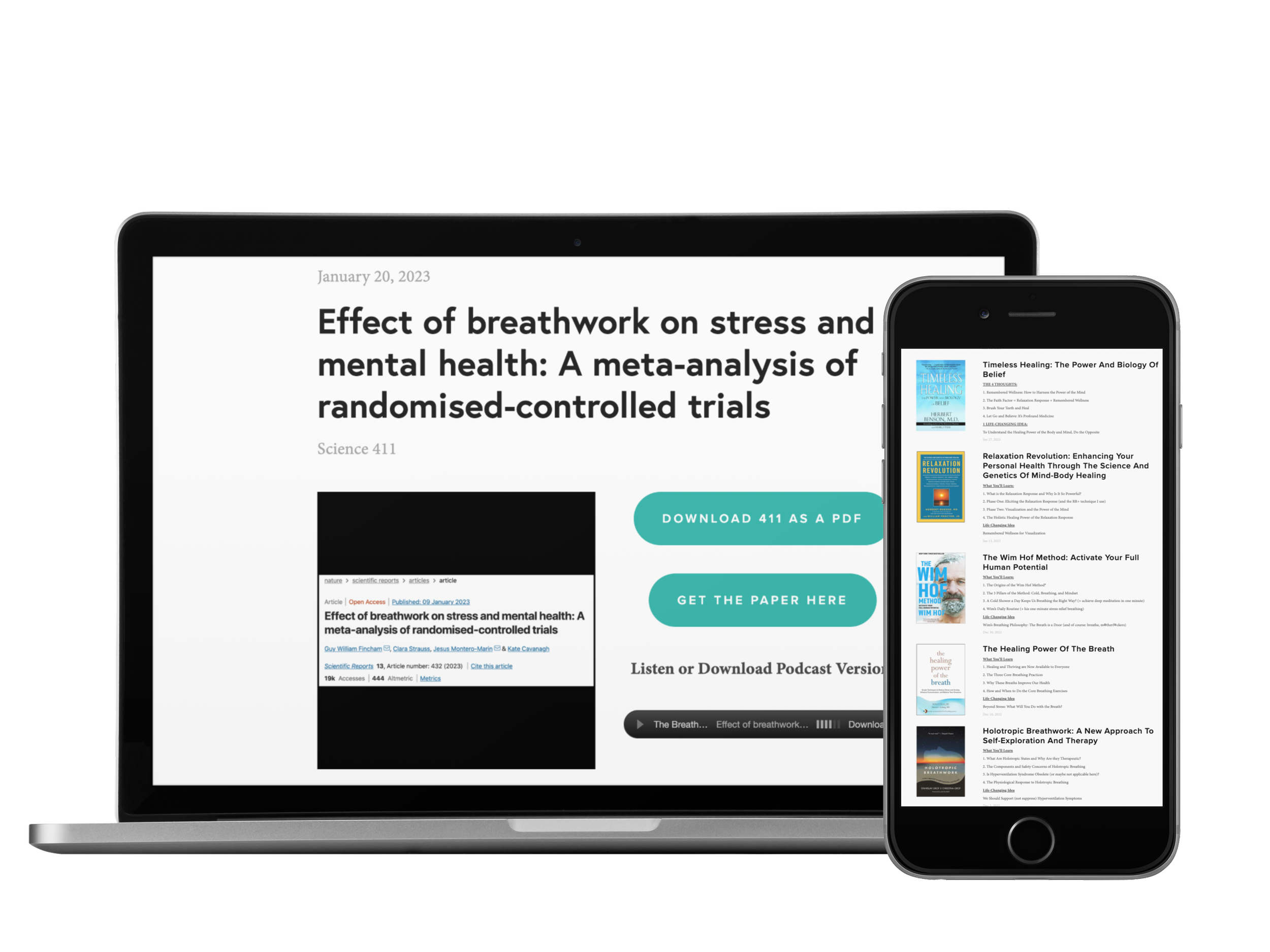Listen Instead of Reading
If you enjoy listening, you can subscribe to the audio version on Spotify, Apple Podcasts, and Audible so you don’t even have to look at the email 😊
Enjoy These Posts?
Reading Time: 1 min 32 sec
I hope the next 19’ish breaths are the most nourishing of your day.
4 THOUGHTS
1. A Miniature Model of Life
“When we truly observe the breath, we are automatically placed in the present. We are pulled out of the morass of mental images and into a bare experience of the here and now. In this sense, breath is a living slice of reality. A mindful observation of such a miniature model of life itself leads to insights that are broadly applicable to the rest of our experience.”
– Bhante Gunaratana, Mindfulness in Plain English
Yep, that sums it up perfectly. I have nothing else to add but several of these 👏👏👏
2. Breath-Brain: Entire Fields are Dedicated to This
“The brain’s metabolic-energetic coupling to respiration is at odds with how neuroscientists methodologically treat respiration. Respiration-related neural activity is typically considered noise, and entire fields are dedicated to stripping it from brain data.”
The breath’s influence on the brain is so pervasive that “entire fields are dedicated to stripping it from brain data.” How crazy is that? 🤯
It’s a powerful reminder that, although we often talk about the breath’s impact on the nervous system, its effects on the brain may be the most profound (yet least appreciated) of all…
3. Three Random Breathing Thoughts
1. Shining your attention on your breath is like a dimmer switch: even if it’s not all the way up, it will still help you see better.
2. Scientific studies of breathing are timely and indispensable; personal experience with the breath is timeless and irreplaceable.
3. Equanimity is when the breather realizes they are the breath.
4. Few Persons Realize
“Few persons realize that health actually varies according to the amount of laughter.”
– James J. Walsh, MD, PhD
Here is our weekly reminder to laugh. It is, after all, the best “breathing exercise” around… 😊
1 Quote
“Pressure is contagious, but so is good will. Just one person slowing down, one person not putting others under pressure, helps everyone else to relax too.””
1 Answer
Category: Breath Connection
Answer: Breathing influences this organ over a wide set of frequencies, ranging from as slow as 0.01 Hz to as high as 80 Hz.
…
(Cue the Jeopardy! music.)
…
Question: What is the brain?
In good breath,
Nick Heath, T1D, PhD
“Breathing is the compound interest of health & wellness.”
P.S. like I get it
Reminder: A Good New Year Begins Now
Like a good inhale starts with a full exhale, or a good morning starts the night before, a good 2025 begins with how we end this year. So, if you want to start 2025 off strong, consider ending this year by becoming a Mixed Mindful Artist. You can do that by joining the Breath Learning Center. I’ve made it accessible, with options starting at just $5, because I believe the mixed mindful arts should be available to all who seek them. I hope you’ll join us!
The Breathing App for Diabetes
This is the first program specifically made for people with diabetes to help manage their stress through breathing and mindfulness practices. In addition to the amazing program inside the app, we have some really neat things coming up, so sign up now!
Amazon Associate Disclosure
I’ve been recommending books for almost 6 years. Yet somehow, I just discovered that I could be an Amazon affiliate [face-palm]. In any case better late than never. Now, any Amazon link you click is an affiliate link. As an Amazon Associate, I earn from qualifying purchases. So, if you’d like to support my work, buying books through these links is helpful : )
* An asterisk by a quote indicates that I listened to this book on Audible. Therefore, the quotation might not be correct, but is my best attempt at reproducing the punctuation based on the narrator’s pace, tone, and pauses.


